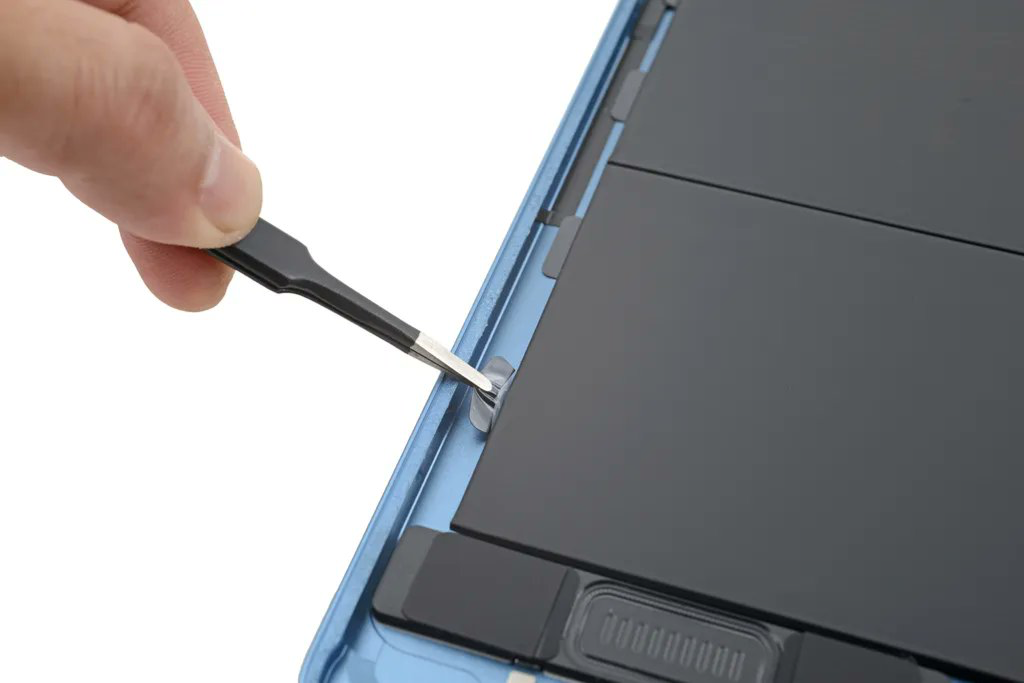Last month, Apple introduced the fifth generation iPad Air. The main innovations include an M1 chip, 5G support for cellular models, an improved front camera with Center Stage support, and a USB-C port for data transfer that is up to two times faster. As it turns out, Apple also made an internal change to the device that should please repair advocates.
According to the repair website iFixit The new iPad Air's battery cells have pull tabs on the bottom that make them easier to remove. In comparison, previous iPad Air models have fully glued-in battery cells that are more difficult to remove. Technicians typically have to use a solvent such as isopropyl alcohol to loosen the large amount of adhesive. The pull tabs are intended to simplify battery replacement for third-party vendors and customers who want to repair the device themselves. Apple Stores and authorized service partners will continue to replace the entire unit when a customer needs a new battery for their iPad, according to a source familiar with the matter.

iPad Air 5: Use of pull tabs is not new
The pull tabs could also have environmental benefits, as they make it easier for Apple's recycling partners to remove the battery from the iPad's aluminum casing. Apple has already equipped other devices, such as the sixth-generation iPad mini and the latest 14- and 16-inch MacBook Pro models, with battery pull tabs. Despite the pull tabs, iFixit found that the iPad mini's battery is still glued to the top and bottom edges, making the design not entirely repair-friendly. It's unclear whether the new iPad Air's battery cells will also remain glued to some extent. (Image: Apple)





